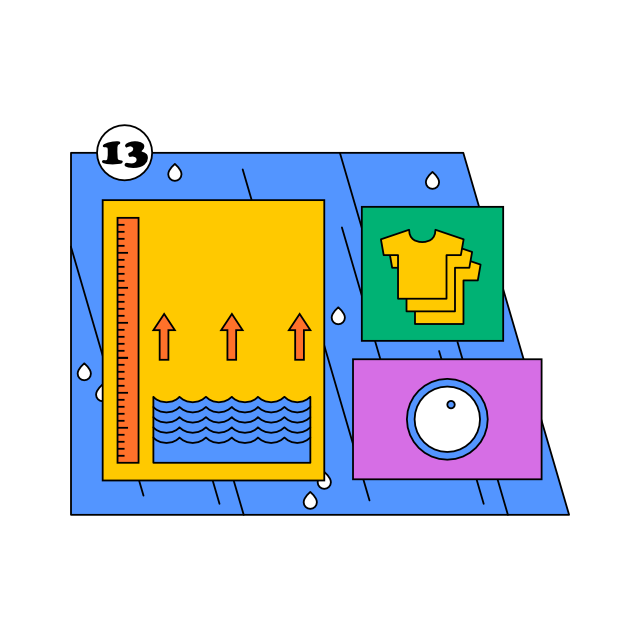SDG 13Climate action
Can the catastrophic climate change scenarios still be reversed at all?
Overview
We all know that the driver of climate change is greenhouse gas emissions. They are currently at their highest level in history and continue to rise. To put this in perspective, global carbon dioxide emissions have increased by nearly 50% since 1990.1
From 1880 to 2012, the average global temperature increased by 0.85 °C. If nothing changes, the average global surface temperature is likely to increase by more than 3 degrees Celsius in the 21st century.
Climate change and global warming is also affecting sea levels and melting ice sheets. Sea levels have risen by an average of 19 cm from 1901 to 2010. The area of Arctic sea ice has been decreasing by 1.07 million km2 per decade since 1979.2
It is widely agreed that the changes will affect the poorest and most vulnerable regions the hardest, with potentially fatal consequences for the entire planet. The action that the world leaders regularly agree on in the face of catastrophe is fatally failing. The way to avert the climate crisis is to reduce greenhouse gas emissions heating up the entire planet. People’s ability and willingness to make greater energy savings, as well as the use of renewable energy sources, plays a major role in this.
Solution and Key Innovations
There are, of course, several institutions researching climate. They have the potential to describe what we are facing as accurately as possible and to offer solutions that can help humanity in the current crisis. This is one of the reasons that the International Universities Climate Alliance, a group of universities that strive to work on projects focused on climate change, sustainability, and digitalization, was established in 2020. These include the Vrije Universiteit Amsterdam, the University of Iceland, Universität Innsbruck in Austria, and Copenhagen Business School in Denmark.
The greatest sustainability challenge is greenhouse gas emissions. The strategies to reduce them usually consist of three main components: energy conservation, production efficiency, and the replacement of fossil fuels with various renewable energy sources and low-carbon nuclear energy. Energy is the key area that will get the world to carbon neutrality.
Reducing livestock and reforesting the pastures is one of the key measures to prevent the planet to warm by more than 1.5 degrees Celsius. There are 1.4 billion cows worldwide and their breeding accounts for 10% of global CO2 emissions. Researchers are also drawing attention to this issue. Helen Harwatt together with a research team at the Oregon State University, Bard College, and Loma Linda University in California have been researching what would happen if every American replaced beef by beans in their diet. The switch would free up to 42% of American land.
Reducing textile production will also help make the planet a cleaner place. This, along with switching to a plant-based diet and conserving energy, is something that each of us can do, simply by buying fewer new clothes. In fact, the fashion industry is responsible for 10% of our total annual carbon footprint.
Key Questions
- Will the world agree on and be able to comply with the measures needed to reverse adverse climate change?
- Will we reverse the catastrophic scenarios of the consequences of global warming?
- Will we reduce the production of carbon gases?
- Will we start living more sustainably?
Key Words
Climate change, global warming, climate, ecology, sustainability, emissions, greenhouse gases
Interesting Resources
- NASA’s climate activities
- The Plastic & Climate Study: The Hidden Costs of a Plastic Planet
- Web International Universities Climate Alliance
- How will climate change make some areas uninhabitable?
- CzechGlobe – the Institute of Global Change Research of the Czech Academy of Sciences, which investigates the ongoing global change and its impact on the atmosphere, the biosphere, and human society using the latest techniques and tools
- Climate Change 2021: The Physical Science Basis
